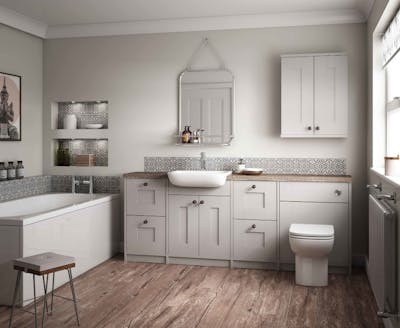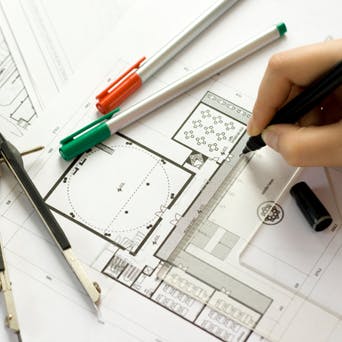Tips For Choosing Bathroom Tiles | More Bathrooms
Published: 16 June 2020
If you’re looking for top tips for choosing bathroom tiles then you’ve come to the right place. In this article we’ll be answering the most common questions around tile choices, particularly what sized tiles are best for different sized bathrooms.
The truth is with an array of bathroom tiles now available knowing which tile to choose can be an overwhelming task. In our opinion picking your bathroom tiles is one of the most exciting elements of bathroom design.
Regardless of whether you’re undertaking a full bathroom remodel or want to spruce up your existing suite. In short they are a great way to transform the tone, mood and really showcase your suites personality so you need to be confident you’ve made the right decision.
In addition to sharing our top tips we’ll also be addressing the key factors you need to consider when purchasing new bathroom tiles including tile location, materials, shapes and colours.
Deciding Where To Locate Tiles.
Firstly, and depending on your bathroom size, tiles can be located in several areas around your bathroom including:
Feature Walls:
Adding a feature wall in a bold print or pattern can add personality to any bathroom without tilling the entire suite.
.jpg?auto=compress%2Cformat&cs=strip&ixlib=php-1.1.0&s=8262075db938b8b43aa6c46d950f9fa5)
The Shower And Backsplash Area:
As the most used areas in the bathroom, many choose to tile the shower and basin backsplash with matching tiles to waterproof the areas.
Bathroom Floor And Walls:
A popular option for wet rooms, tiling your entire bathroom floor and walls adds luxury to your bathroom design.
Half Tiled Walls:
A popular option for many, tiling your bathroom partway up the wall helps to visually elongate bathroom space.It is a great location choice for patterned tiles as it helps to prevent bathroom designs feeling too busy.
Should Bathroom Floor And Wall Tiles Match?
We are often asked should bathroom floor and wall tiles match and the answer is it is up to your personal style preferences.
Opting for a matching floor and wall tiles can create unison and the illusion of space. However It should be noted that this should be carefully considered as highly patterned wall and floor tiles can make smaller bathrooms feel cramped.
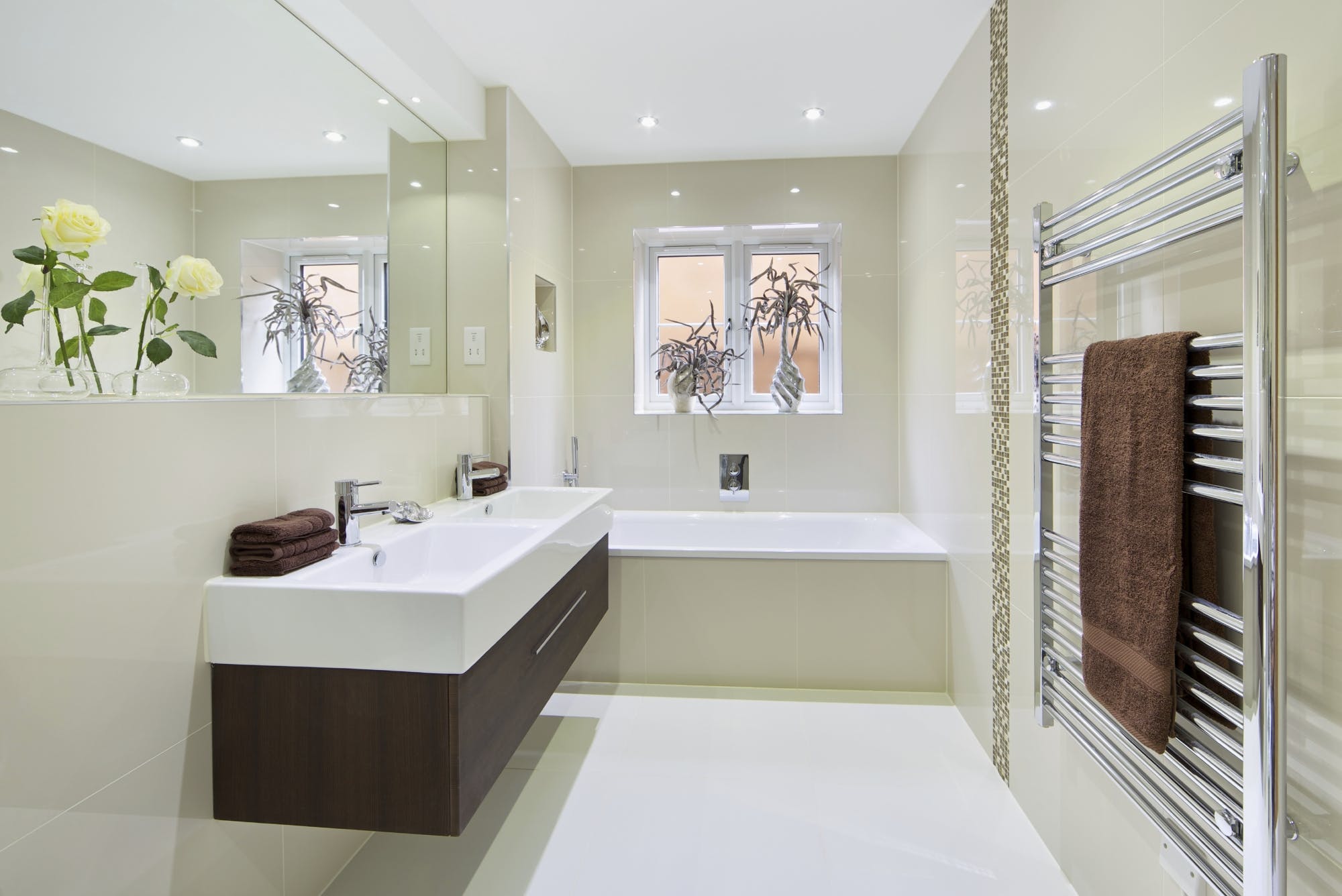
Choosing Your Tile Material.
Secondly your choice of bathroom tile material can help to add texture to your bathroom design. There is a wide variety of tile materials available with different properties and price points, however the most popular include:
Marble Tiles:
Available as floor and or wall tiles, marble tiles can add luxury and depth to any bathroom. They are available in light to dark colour tones and a range of sizes and finishes.

Travertine Tiles:
Similar to marble, travertine tiles are made from natural stone and provide a luxurious feel to your suite. Both Marble and travertine tend to be higher in cost than other tile options.
Ceramic Tiles:
Ceramic tiles are one of the most popular tiling options. They are a budget friendly option and are available in a range of colours and sizes.
Porcelain Tiles:
Porcelain tiles are similar to ceramic tiles but are made from a denser clay. They are low maintenance and hard wearing.
Glass Tiles:
Often used for basin back splashes or part of a mosaic design. Glass tiles glossy texture provides additional shine, creating the illusion of more space.
Find out more about the different bathroom tile materials.
What Type Of Tiles Are Best For Shower Walls?
The majority of bathroom tiles materials can be used for shower walls.
Due to their low maintenance, high durability and range of colours and designs ceramic and porcelain tiles tend to be the most popular.

Choosing Your Tile Shape And Pattern.
Thirdly, and similarly to the range of tile materials available, there is also a wealth of choice of tile shapes and patterns. The most popular tile shapes include:
Square And Rectangle:
Square and rectangle shaped tiles can be used to create variety of patterns. The most popular include straight stack (grid), Herringbone (V shaped) and brick bond (staggered).
Triangle And Diamond:
Triangle and diamond shaped tiles are often combined to create a range of eye-catching geometrical patterns.
Hexagon And Scalloped:
Often used for feature walls, Hexagon and scalloped shaped tiles are used to create modern mosaic patterns. They are often located from floor to ceiling, creating the illusion of height by drawing the eye upwards.
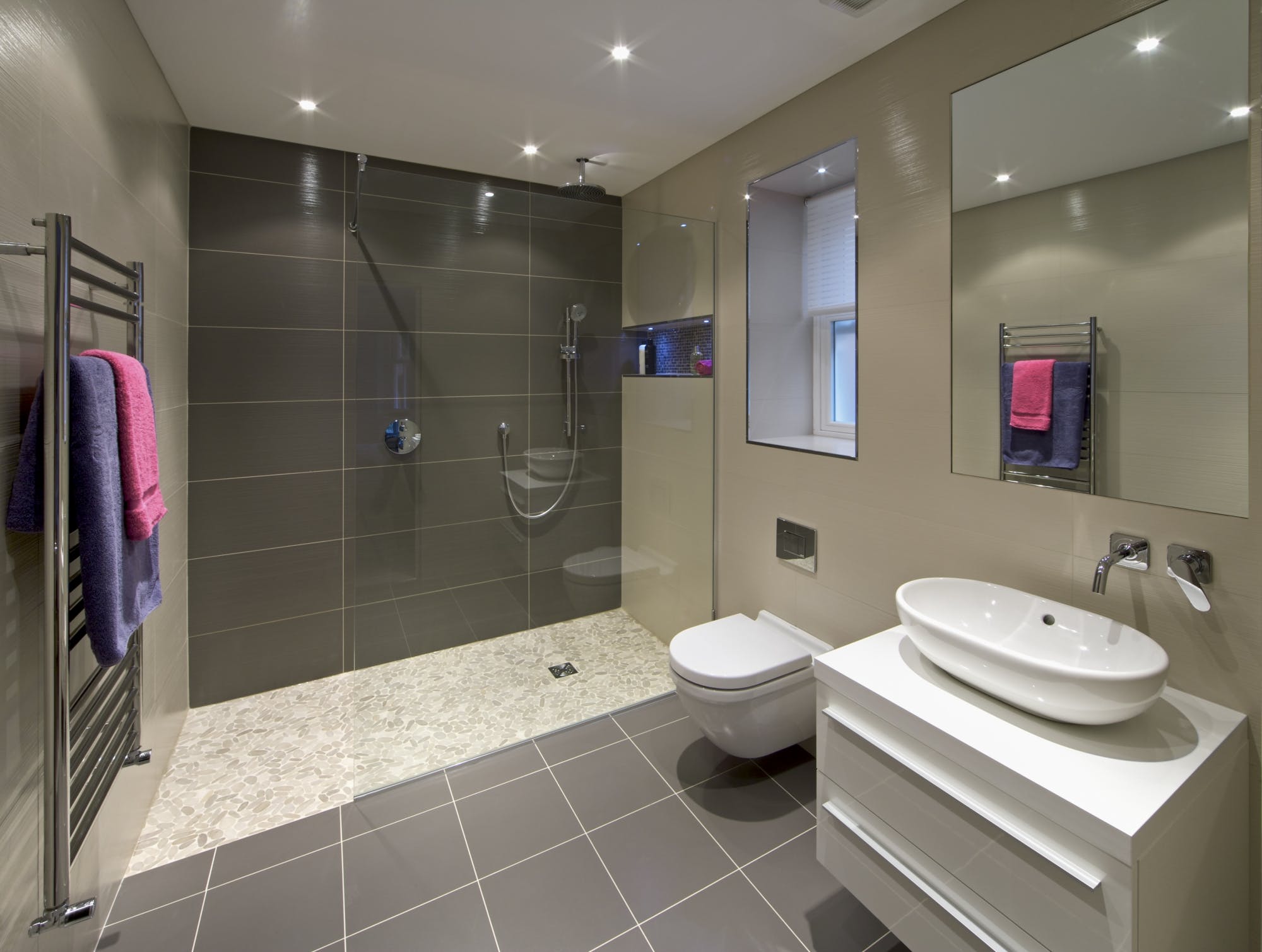
Choosing Your Tile Size.
When it comes to deciding your bathroom tile size there are no set rules. Depending on your bathroom layout and tile design you will need to consider if your choice of tile is suitable for your bathroom size.
What Sized Tiles Are Best For Different Sized Bathrooms?
Finally, and depending on the size of your bathroom, some tiles may work better than others. For example if you have a small suite consider tiles with a simplistic design as busier designs, such as mosaics, can make small suites look cluttered and overcrowded as they create more grout lines.
Similarly, large tiles, particularly when used on the floor, can make suites feel wider, as less grout lines can create the illusion of having more floor space so also work well in smaller bathrooms.
In addition to shape and size you may also want to consider your bathroom tile design and colours:
Neutral Colours:
Neutral colours, particularly greys and beiges can provide a minimal and modern addition to your suite.
![]()

Bright Colours And Bold Patterns:
Including bright colours and or bold patterns to your suite can help to adds personality, particularly when incorporating fun eye catching designs.
Monochrome:
Black and white tiles provide simplicity and sophistication. They can be used to create a wide range of styles and patterns.
Light Colours:
Lighter colours, including whites and creams, create the illusion of more space by reflecting light around the room.
.jpg?auto=compress%2Cformat&cs=strip&ixlib=php-1.1.0&s=c1bf7d64c545026f2a834d38e820bdfb)
If you wish to find out more about bathroom tile options or wish to further discuss your bathroom renovation requirements call us or book your free, no obligation design appointment with one of our senior designers today.
Share this Post


.jpg?auto=compress%2Cformat&cs=strip&ixlib=php-1.1.0&s=8262075db938b8b43aa6c46d950f9fa5)





.jpg?auto=compress%2Cformat&cs=strip&ixlib=php-1.1.0&s=c1bf7d64c545026f2a834d38e820bdfb)
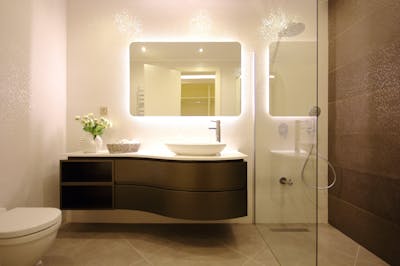
.jpg?auto=compress%2Cformat&cs=strip&fit=clip&h=400&ixlib=php-1.1.0&w=400&s=650efd70d263e5302d2f210efde25839)
